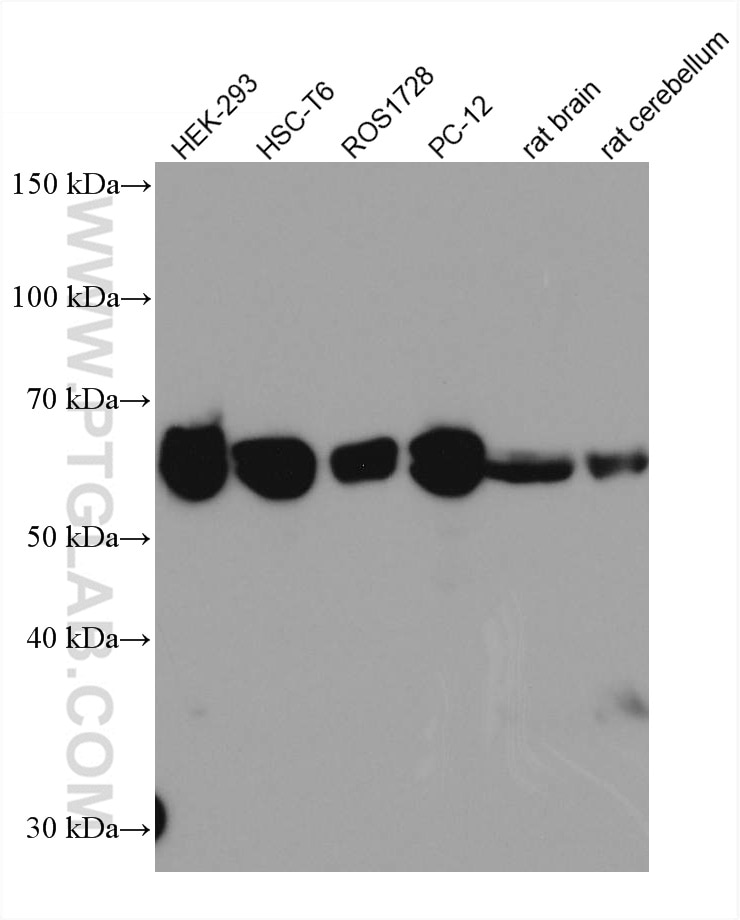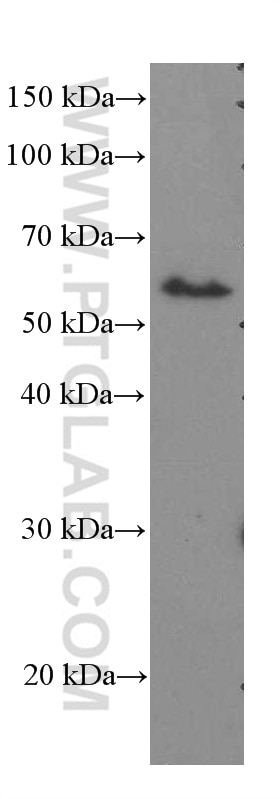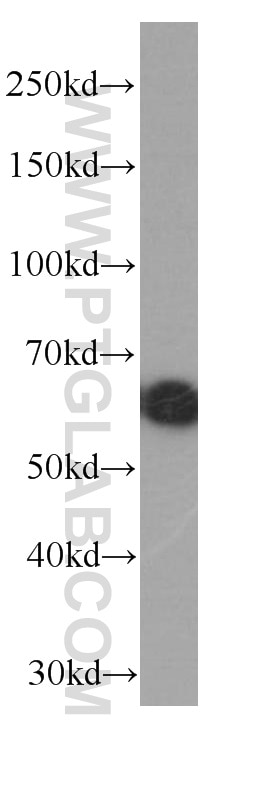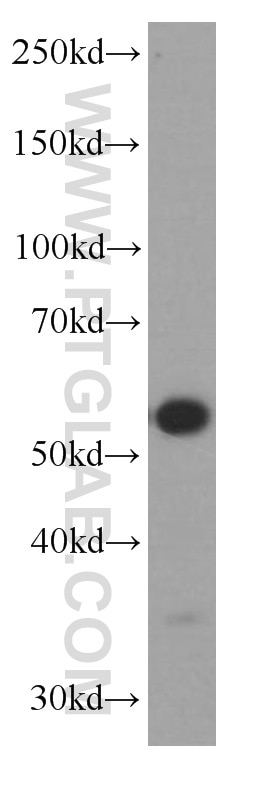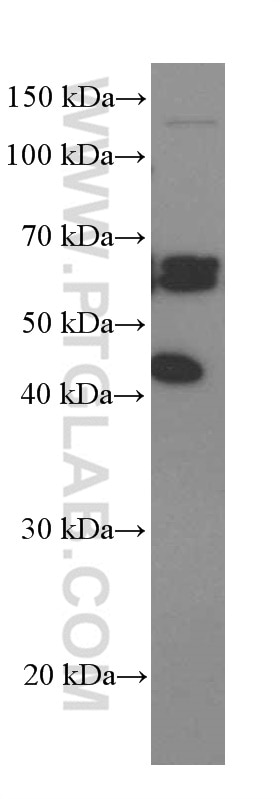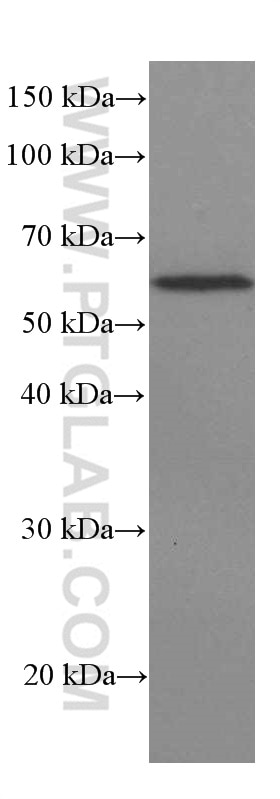Anticorps Monoclonal anti-IL-1RL1/ST2
IL-1RL1/ST2 Monoclonal Antibody for WB, ELISA
Hôte / Isotype
Mouse / IgG1
Réactivité testée
Humain, porc, rat, souris
Applications
WB, ELISA
Conjugaison
Non conjugué
CloneNo.
7A2A7
N° de cat : 60112-1-Ig
Synonymes
Galerie de données de validation
Applications testées
| Résultats positifs en WB | cellules HEK-293, cellules HSC-T6, cellules PC-12, cellules ROS1728, cellules SGC-7901, tissu cérébral de porc, tissu cérébral de rat, tissu cérébral de souris, tissu cérébral humain fœtal, tissu de cervelet de rat |
Dilution recommandée
| Application | Dilution |
|---|---|
| Western Blot (WB) | WB : 1:5000-1:50000 |
| It is recommended that this reagent should be titrated in each testing system to obtain optimal results. | |
| Sample-dependent, check data in validation data gallery | |
Applications publiées
| KD/KO | See 1 publications below |
| WB | See 9 publications below |
Informations sur le produit
60112-1-Ig cible IL-1RL1/ST2 dans les applications de WB, ELISA et montre une réactivité avec des échantillons Humain, porc, rat, souris
| Réactivité | Humain, porc, rat, souris |
| Réactivité citée | Humain, porc, souris |
| Hôte / Isotype | Mouse / IgG1 |
| Clonalité | Monoclonal |
| Type | Anticorps |
| Immunogène | IL-1RL1/ST2 Protéine recombinante Ag2555 |
| Nom complet | interleukin 1 receptor-like 1 |
| Masse moléculaire calculée | 63 kDa, 37 kDa, 30 kDa |
| Poids moléculaire observé | 63 kDa |
| Numéro d’acquisition GenBank | BC030975 |
| Symbole du gène | IL1RL1 |
| Identification du gène (NCBI) | 9173 |
| Conjugaison | Non conjugué |
| Forme | Liquide |
| Méthode de purification | Purification par protéine G |
| Tampon de stockage | PBS with 0.02% sodium azide and 50% glycerol |
| Conditions de stockage | Stocker à -20°C. Stable pendant un an après l'expédition. L'aliquotage n'est pas nécessaire pour le stockage à -20oC Les 20ul contiennent 0,1% de BSA. |
Informations générales
ST2, also known as IL1RL1, is a member of the IL-1 superfamily and serves as the receptor for IL-33. It plays a major role in immune and inflammatory responses. ST2 is expressed by various types of immune cells including Th2 cells, mast cells, type 2 innate lymphoid cells, eosinophils, basophils, NK cells, and non-immune cells, including cardiomyocytes. Two forms of ST2 exist: a membrane-bound form and a soluble form (sST2). The membrane-bound form activates the MyD88/NF-κB signaling pathway to enhance mast cell, Th2, regulatory T cell (Treg), and innate lymphoid cell type 2 functions. sST2 acts as a decoy receptor. (PMID: 27055914; 23999434; 28484466)
Protocole
| Product Specific Protocols | |
|---|---|
| WB protocol for IL-1RL1/ST2 antibody 60112-1-Ig | Download protocol |
| Standard Protocols | |
|---|---|
| Click here to view our Standard Protocols |
Publications
| Species | Application | Title |
|---|---|---|
Immunity Interleukin-33 Promotes Serotonin Release from Enterochromaffin Cells for Intestinal Homeostasis. | ||
Brain Behav Immun Fibroblast-derived IL-33 exacerbates orofacial neuropathic pain via the activation of TRPA1 in trigeminal ganglion neurons | ||
Neurology Association of Soluble ST2 With Functional Outcome, Perihematomal Edema, and Immune Response After Intraparenchymal Hemorrhage | ||
Sci Rep Dysfunctional EAT thickness may promote maladaptive heart remodeling in CVD patients through the ST2-IL33 system, directly related to EPAC protein expression. | ||
Sci Rep Fatty acid-binding protein 5 limits ILC2-mediated allergic lung inflammation in a murine asthma model. | ||
Cancer Biomark Targeting IL-17alpha to promote anti-PD-1 therapy effect by screening the tumor immune microenvironment in a mouse oral carcinogenesis model |
